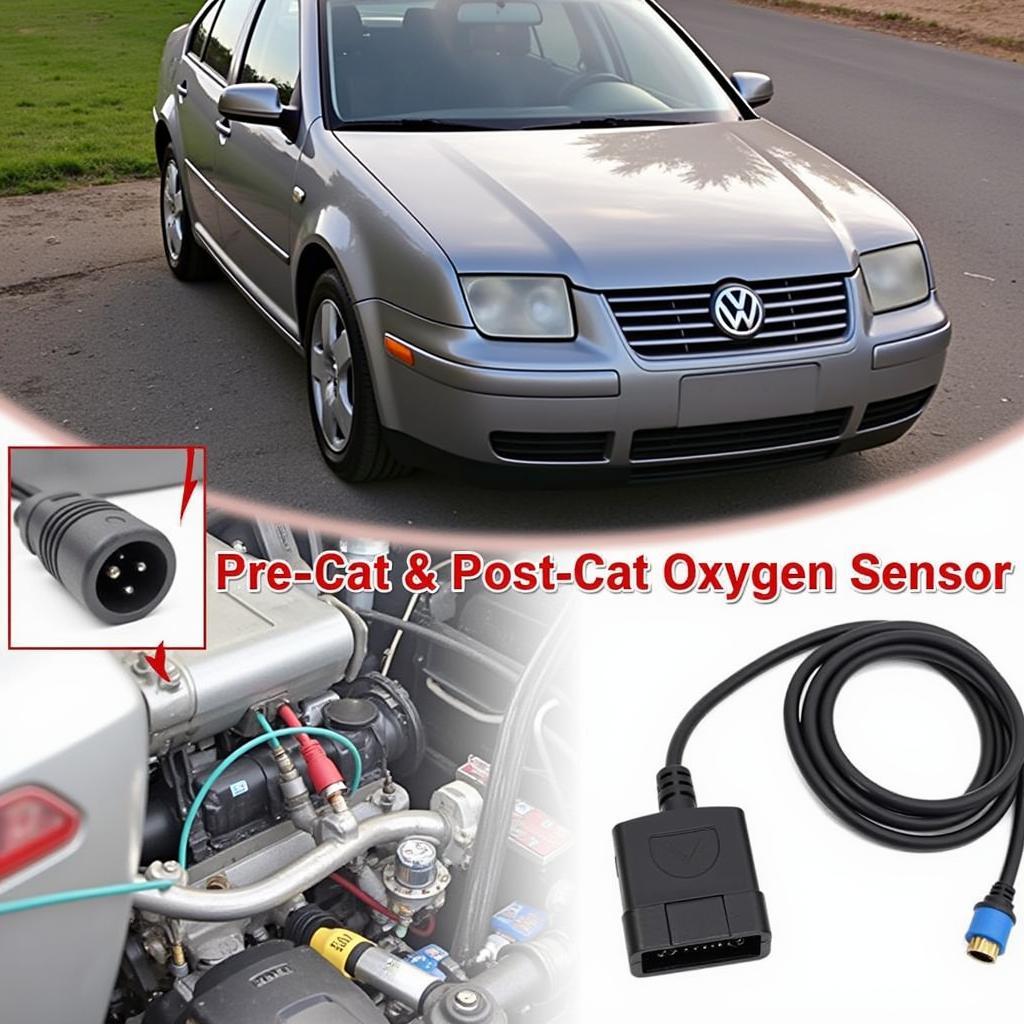Your cart is currently empty!

Troubleshooting a 2001 Jetta Oxygen Sensor with VCDS Measuring Blocks
If your 2001 Jetta is acting up, and you suspect the oxygen sensor, VCDS measuring blocks can be your best friend. This guide will walk you through how to use VCDS (Vag-Com Diagnostic System) to diagnose and troubleshoot oxygen sensor issues on your 2001 Volkswagen Jetta. We’ll cover everything from understanding the basics of oxygen sensors and VCDS to interpreting the data and fixing common problems.
Understanding Oxygen Sensors and their Importance
Oxygen sensors, also known as O2 sensors, are crucial components of your Jetta’s engine management system. They measure the amount of unburnt oxygen in the exhaust gases, providing vital information to the engine control unit (ECU). This data allows the ECU to adjust the air-fuel mixture, ensuring optimal combustion, fuel efficiency, and reduced emissions. A faulty oxygen sensor can lead to a range of problems, from poor gas mileage and rough idling to increased emissions and even catalytic converter damage.
What are VCDS Measuring Blocks and How Can They Help?
VCDS is a powerful diagnostic tool that allows you to access and interpret the data from your Jetta’s various sensors, including the oxygen sensors. Measuring blocks are specific data points within VCDS that provide real-time readings from these sensors. By examining these values, you can pinpoint the source of your oxygen sensor problems. Using VCDS measuring blocks for a 2001 Jetta oxygen sensor diagnostic is essential for effective troubleshooting.
 2001 Jetta Oxygen Sensor Location Using VCDS
2001 Jetta Oxygen Sensor Location Using VCDS
2001 Jetta Oxygen Sensor Measure Blocks VCDS: A Step-by-Step Guide
Here’s how to use VCDS to diagnose oxygen sensor issues on your 2001 Jetta:
- Connect VCDS to your Jetta’s OBD-II port. Make sure your ignition is switched on, but the engine is not running.
- Select “Engine” from the main VCDS menu.
- Click on “Measuring Blocks – 08”.
- Enter the appropriate measuring block group for your engine code. You can find this information in your VCDS documentation or online resources specific to the 2001 Jetta. Typically, oxygen sensor data is found in groups 030, 031, 032 and 033.
- Observe the values displayed for the oxygen sensors. A healthy pre-cat oxygen sensor should fluctuate rapidly between 0.1V and 0.9V, indicating it is actively switching. A post-cat sensor should remain relatively steady around 0.7V.
Interpreting the Data: What Does it All Mean?
- Slow or Stuck Sensor: If the pre-cat oxygen sensor reading stays at a fixed value or fluctuates very slowly, it may indicate a faulty sensor.
- No Activity: A reading of 0V suggests a complete sensor failure or a wiring issue.
- High Voltage (Above 1V): This can indicate an excessively rich fuel mixture or a sensor malfunction.
- Low Voltage (Consistently below 0.1V): This may suggest a lean fuel mixture.
Common Oxygen Sensor Problems and Solutions
- Wiring Issues: Check for damaged or corroded wiring and connectors.
- Faulty Sensor: If the sensor is confirmed to be faulty, replacement is usually the only solution. Always use a high-quality OEM or equivalent sensor.
- Vacuum Leaks: Vacuum leaks can affect the air-fuel mixture and indirectly impact oxygen sensor readings.
- Fuel Delivery Problems: Issues with the fuel pump, fuel filter, or injectors can also influence sensor readings.
 Replacing a 2001 Jetta Oxygen Sensor
Replacing a 2001 Jetta Oxygen Sensor
“Using VCDS to analyze oxygen sensor data is like having x-ray vision into your engine’s combustion process,” says Robert Hernandez, Lead Automotive Diagnostic Technician at Hernandez Automotive. “It allows you to pinpoint issues quickly and efficiently, saving time and money.”
Conclusion
Using VCDS measuring blocks to diagnose your 2001 Jetta oxygen sensor can save you a lot of headaches and potentially expensive repairs. By understanding how to interpret the data and identify common problems, you can keep your Jetta running smoothly and efficiently. If you need further assistance, feel free to contact us at +1 (641) 206-8880 and our email address: vcdstool@gmail.com or visit our office at 6719 W 70th Ave, Arvada, CO 80003, USA. You can also find more helpful resources on our website: vcdstool.
“Don’t just throw parts at the problem. Use VCDS to get a clear diagnosis before replacing any components,” adds Hernandez. “It’s the smartest way to troubleshoot your Jetta.”
 2001 Jetta OBD2 Port and VCDS Connection
2001 Jetta OBD2 Port and VCDS Connection
FAQ
- What is VCDS?
VCDS is a diagnostic software that allows you to communicate with your car’s computer. - Where can I get VCDS?
You can purchase VCDS software and cables online from authorized distributors. - How do I find the correct measuring blocks for my Jetta?
Consult your VCDS documentation or online forums for specific measuring block groups. - What does a fluctuating oxygen sensor reading indicate?
A fluctuating reading typically means the sensor is working properly. - What if my post-cat oxygen sensor is fluctuating?
This could indicate a problem with the catalytic converter. - What should I do if my oxygen sensor readings are out of range?
Further diagnosis is needed, and you may need to replace the sensor. - Can other issues affect oxygen sensor readings?
Yes, problems like vacuum leaks and fuel delivery issues can indirectly impact readings.
by
Tags:
Leave a Reply